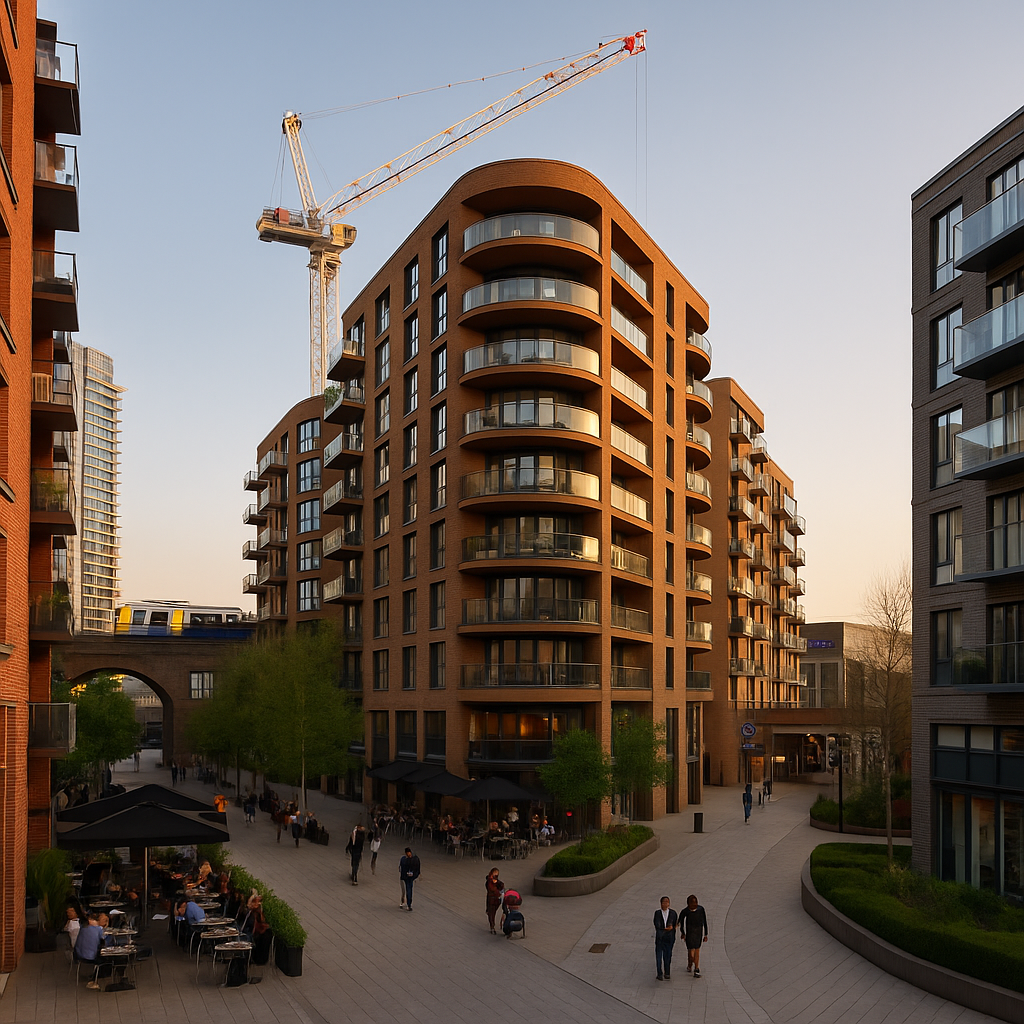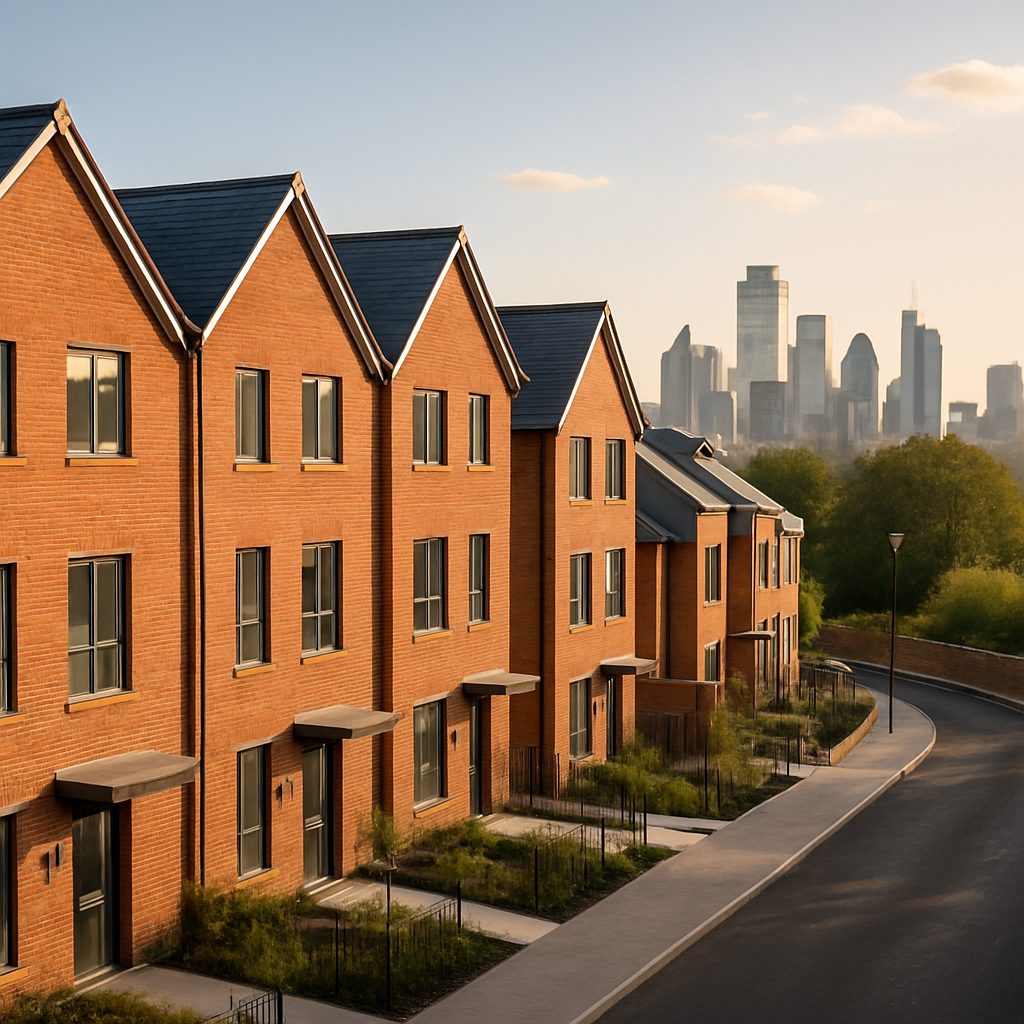The UK housing market experienced a short-lived slowdown following the April 2025 stamp duty reset, with prices briefly dipping before recovering over the summer. While the initial impact was driven by buyers rushing to beat the tax deadline, key indicators, from mortgage approvals to price-to-income ratios, now signal improved affordability and steady demand. For Middle Eastern investors eyeing the London market, the current climate offers a rare alignment of softened prices, increased supply, and potential interest rate cuts.
At Entralon, we help buyers make sense of moments like this, not by selling properties, but by offering impartial, data-backed insights. Our guidance is shaped around your goals, not commissions. That’s why we don’t charge for consultations. Whether you’re comparing Dubai and London, assessing stamp duty costs, or searching for off-plan value, our team is here to help you decide with clarity and confidence.
What happened to UK house prices after the stamp duty change?
UK house prices slipped 0.6 % in April 2025 as the market adjusted to the end of temporary stamp duty relief. The average property value fell to £270,752, down from £271,316 in March. Transactions surged 62 % in March as buyers rushed to beat the 1 April deadline, but this momentum faded once the nil‑rate band for stamp duty reverted from £250,000 to £125,000.
First‑time buyers felt the squeeze as their tax‑free threshold dropped from £425,000 to £300,000. Nationwide’s chief economist, Robert Gardner, noted that the softening in price growth was expected because many purchasers brought their transactions forward to avoid the tax hike. Despite the lull, underlying demand remains robust, with lenders reporting steady mortgage approvals and a return to normal levels of first‑time buyer activity.
Why did the market react this way?
When a stamp duty holiday ends, housing markets often experience a brief dip as transactions are pulled forward. The April price fall mirrors the pattern seen after previous tax holidays; activity is likely to remain subdued in the short term but pick up again over the summer.
Estate agents reported that many buyers delayed decisions until the Bank of England’s May rate cut, while rising living costs and global uncertainty also weighed on sentiment. The nil‑rate threshold reduction particularly affects buyers in southern England, where property values are higher and the tax now bites at lower price points.
How is the housing market reacting to the new stamp duty rules?
Despite the April decline, subsequent data show the market stabilising. This section looks at recent price trends and what they reveal about the direction of travel.
House prices continued to soften in early summer. Nationwide’s index showed a 0.8% fall in June, the biggest monthly decline since early 2023, taking the average price to £271,619. Annual growth slowed to 2.1%, down from 3.5% in May.
Regional differences persisted: Northern Ireland posted 9.7 % annual growth, while England saw a more modest 2.5 % increase.
By July, the market had regained momentum. Nationwide reported that the average UK home price rose 0.6 % to £272,664. The annual growth rate edged up to 2.4 %, and mortgage approvals remained buoyant with more than 64,200 loans approved that month.
Gardner noted that the price‑to‑income ratio fell to about 5.75 times average earnings, making housing the most affordable it has been in over a decade. Although borrowing costs are still high, banks expect further rate cuts this year, which could support demand.
For international buyers monitoring price trends, this renewed momentum, paired with improved affordability, makes it a timely moment to explore high-potential areas across London. Our curated map of London’s off-plan and new-build developments offers a clear view of the city’s most promising investment zones.
What economic factors are influencing UK property prices?
Beyond tax policy, wider economic forces shape the market. Understanding inflation, interest rates, and global trade tensions helps investors gauge future trends.
The UK economy entered 2025 with low unemployment and rising real wages. Halifax noted that the average house price was £296,665 in June, roughly 2.5 % higher than a year earlier, despite a soft labour market, where unemployment reached 4.5 %, a four‑year high. Mortgage rates have eased slightly, with two‑ and five‑year fixed deals hovering around 5 %, yet affordability remains stretched.
Inflation unexpectedly climbed to 3.6 % in June 2025. Nevertheless, many analysts expect the Bank of England to trim its base rate from 4.25 % to 4 % at its August meeting.
Lower rates should further support buying power, though global trade tensions add uncertainty. In May, U.S. President Donald Trump and UK Prime Minister Keir Starmer agreed to a limited trade deal that reduced tariffs on cars and steel but left a 10 % tariff on most UK exports. While the agreement eased fears of a wider trade war, sustained cross‑border frictions could dampen economic growth and weigh on sentiment.
What does this mean for Middle Eastern buyers considering London or Dubai properties?
For GCC investors, the recent fluctuations present both challenges and opportunities. London’s market remains resilient, and Dubai continues to attract capital with its tax advantages.
The UK’s brief price correction should be viewed as a buying window rather than a long‑term downturn. Supply has increased as sellers who rushed to beat the tax deadline re‑list homes, providing more choice for buyers. With prices still well below their 2022 highs and affordability improving, London’s new‑build sector offers attractive entry points.
Projects such as Bermondsey Place and Nine Elms are benefiting from improved transport links and regeneration schemes. Overseas investors should budget for the restored stamp duty rates and additional 2 % non‑resident surcharge, but the market fundamentals, strong tenant demand, limited housing stock and global city status remain compelling.
By contrast, Dubai’s residential market continues to post double‑digit price growth as the emirate benefits from a favourable tax regime, high rental yields and continued inflows of foreign capital. For investors comparing the two markets, diversifying across London and Dubai can hedge currency risk and tap into different economic cycles. Our Dubai off‑plan projects section features developments with flexible payment plans and residency incentives.
How have UK house prices evolved since the tax change?
The impact of the April 2025 stamp duty reset is clearly visible when tracking average house prices across the following months. As the tax incentives expired, the UK property market saw a brief pullback, particularly in April and June. However, July data suggests the start of a steady rebound, indicating that the market is absorbing the changes faster than expected.
The table below summarises monthly price fluctuations based on data from Nationwide and Halifax. It allows investors to see how the market responded to the policy shift and how quickly it began to recover. These figures also highlight regional resilience and the importance of timing for buyers considering a move into the market. Following the table, we visualise the rebound using a bar chart to help you intuitively grasp the trend reversal from early summer onward.
UK house prices in 2025
Final thoughts
The end of the stamp duty holiday briefly cooled the UK housing market, but the latest figures suggest that demand is resilient and affordability is improving.
For buyers from the GCC and Middle East, the combination of slightly lower prices, a growing supply of new‑build homes and the prospect of lower interest rates makes this an opportune moment to consider investing in London.
As always, successful property investment requires local expertise and careful planning; our specialists are ready to help you navigate stamp duty rules and identify promising developments. Whether you’re looking for a pied‑à‑terre in London or a luxury apartment in Dubai, contact Entralon’s team for personalised guidance.
FAQs
What are the new stamp duty thresholds in England?
The nil‑rate band for all buyers reverted to £125,000 from £250,000 on 1 April 2025, and the first‑time buyer threshold fell to £300,000. Purchases above these levels now incur higher stamp duty rates.
Why did UK house prices fall in April and June?
The falls were largely due to buyers rushing to complete purchases before the tax change, leading to a temporary post‑deadline lull. The June dip also reflected broader economic uncertainty and high mortgage rates..
Are house prices expected to recover?
Yes. Nationwide reported a 0.6 % rise in July and expects activity to pick up during the summer as interest rate cuts improve affordability. Experts believe that supply constraints and low unemployment will support modest growth.
How do UK stamp duty costs compare with buying in Dubai?
Dubai does not levy stamp duty; buyers pay a 4 % transfer fee plus administrative costs. In the UK, stamp duty rates vary by property value and buyer status; overseas buyers also pay an extra 2 % surcharge.
Where can I find off‑plan opportunities in London and Dubai?
Entralon curates a portfolio of new‑build developments. Visit our London off‑plan properties and Dubai off‑plan projects pages to view current listings and register your interest.












![Where Should Europeans Buy Property in Dubai in 2025? [Top Investment Areas for Off-Plan Buyers]](/content/images/2025/07/imxxage.png)




Discussion